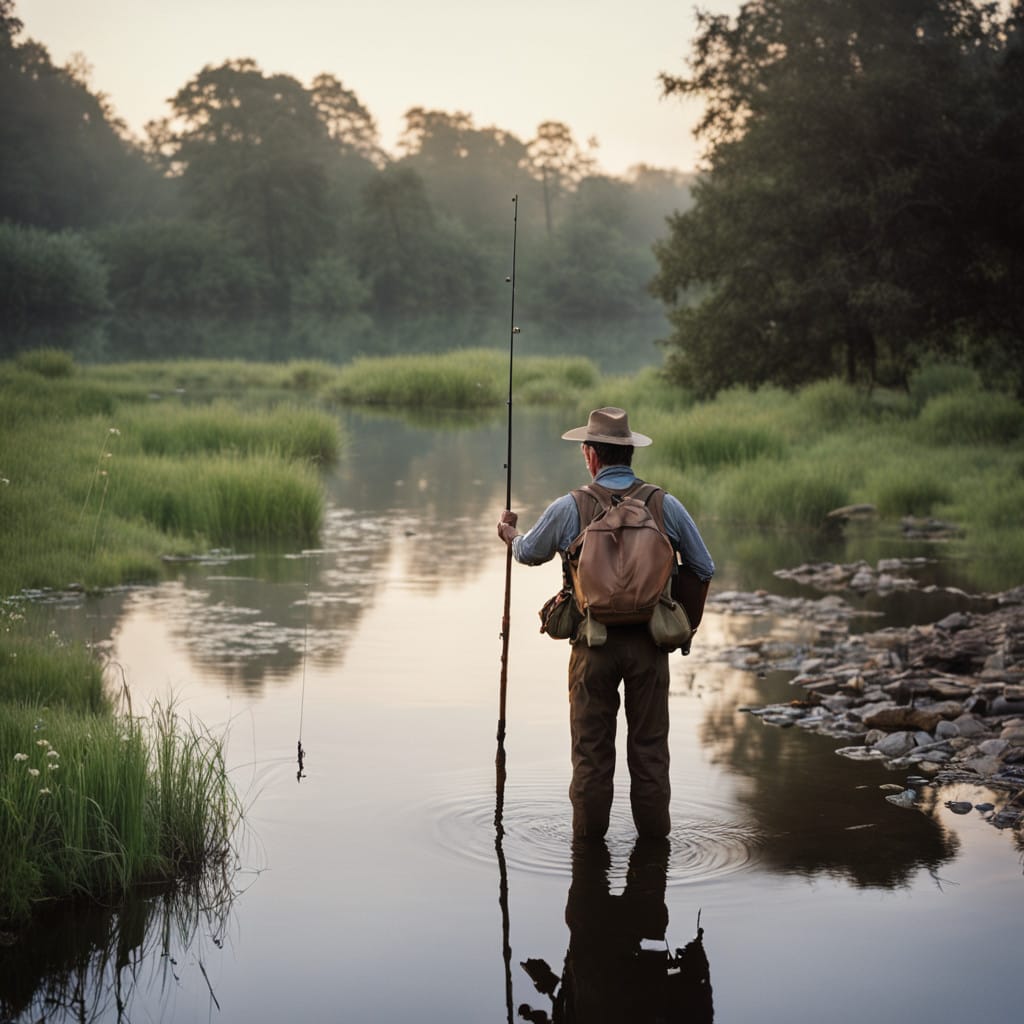
The Art and Essence of Fly Fishing: A Comprehensive Exploration
Fly fishing, a sport deeply rooted in tradition and innovation, captivates anglers worldwide. This timeless activity combines patience, skill, and connection with nature. In this blog post, we will explore its fascinating origins, global reach, amateur appeal, professional leagues, and cultural significance. Additionally, we’ll dive into the rules that guide this exceptional sport. Fly fishing stands out as more than just a pastime—it’s a lifestyle embraced by millions.
Origins and History
The origins of date back thousands of years. Evidence suggests it was practiced in ancient Macedonia around the 2nd century. Claudius Aelianus, a Roman writer, described early fly fishing techniques in his works. Anglers used artificial flies to catch trout in rivers, marking the inception of this sport.
During the medieval period, fly fishing gained prominence in England and Scotland. The famous 15th-century text, The Treatyse of Fysshynge wyth an Angle, provided early instructions. By the 17th century, Izaak Walton’s The Compleat Angler further popularized the practice, emphasizing its philosophical and meditative aspects.
The 19th century brought significant advancements with the Industrial Revolution. Innovations like split-cane rods and synthetic fly lines transformed fly fishing. In North America, the sport flourished, especially in regions like Montana and Colorado, where pristine rivers attracted enthusiasts. The 20th century saw the emergence of specialized fly fishing gear and conservation efforts, solidifying its modern appeal.
Global Popularity
Fly fishing enjoys immense popularity across continents. North America remains a hub, with the United States and Canada boasting world-class rivers and lakes. Regions like the Rockies, Appalachians, and Pacific Northwest offer prime fishing spots. In Europe, countries such as Scotland, Norway, and Iceland draw anglers with their salmon-rich waters.
New Zealand and Australia are renowned for their crystal-clear streams and challenging trout species. Similarly, South America, particularly Patagonia, attracts fly fishing enthusiasts seeking adventure. Africa’s freshwater systems, including the Zambezi River, provide unique opportunities for tigerfish angling.
In Asia, Japan’s tenkara style offers a minimalist approach. Meanwhile, Russia’s rivers host abundant salmon, drawing international attention. The sport’s global reach reflects its universal appeal and adaptability to diverse ecosystems.
Amateur Fly Fishing: Accessibility for All
Fly fishing’s accessibility makes it ideal for amateurs. Beginners often start with basic equipment, including rods, reels, and artificial flies. Numerous workshops and online tutorials simplify the learning process. Local fishing clubs frequently organize events to introduce newcomers to the sport.
Youth programs play a crucial role in cultivating interest. Schools in regions like Montana integrate fly fishing into their extracurricular activities. These programs teach students casting techniques, fly tying, and environmental stewardship. Such initiatives foster a love for nature and outdoor activities.
Community events and family outings also encourage participation. Lakes and stocked ponds provide controlled environments for beginners. This inclusive approach ensures everyone, regardless of age or skill level, can enjoy the sport.
Professional Fly Fishing Leagues and Competitions
The professional scene has grown significantly. Competitions test anglers’ precision, speed, and adaptability. The Fly Fishing World Championship, organized by the International Sport Fly Fishing Federation (FIPS-Mouche), is a premier event. Teams from various countries compete in categories such as river and lake fishing.
In the United States, the Fly Fishing Team USA represents the nation in international contests. Europe hosts notable events like the British Fly Casting Championships and Scandinavian Fly Fishing competitions. These events showcase advanced techniques and cutting-edge gear.
South Africa and Australia have also developed competitive circuits. Professional leagues emphasize sustainability and catch-and-release practices. Sponsorships and media coverage further elevate the sport’s profile, inspiring amateurs to hone their skills.
Political and Social Significance
Fly fishing holds profound political and social implications. Conservation efforts often intersect with the sport’s ethos. Organizations like Trout Unlimited advocate for clean water and habitat preservation. Anglers frequently participate in river cleanups and ecological projects, highlighting the sport’s environmental commitment.
Politically, it fosters diplomacy and collaboration. International competitions bring diverse cultures together, promoting mutual understanding. Additionally, fly fishing retreats for veterans, such as Project Healing Waters, provide therapeutic benefits. These initiatives demonstrate the sport’s capacity to heal and unite communities.
Socially, it creates opportunities for mentorship and bonding. Experienced anglers often mentor newcomers, passing down knowledge and traditions. Families and friends connect through shared experiences on the water. The sport’s inclusive nature transcends barriers, making it a unifying activity.
Rules and Techniques in Fly Fishing
Fly fishing’s rules vary based on location and species targeted. However, some universal principles guide participants. Anglers must use artificial flies to attract fish, mimicking insects or bait. These flies are crafted from materials like feathers, thread, and fur.
Casting technique is essential for success. The line’s weight propels the fly to the desired spot. Proper timing and wrist movement ensure accuracy. Catch-and-release practices are encouraged to preserve fish populations. Handling fish gently and minimizing stress are crucial during release.
Local regulations dictate fishing seasons, permitted areas, and catch limits. Compliance ensures sustainable practices and protects aquatic ecosystems. Adhering to these rules reflects respect for the environment and fellow anglers.
The Future of Fly Fishing
Fly fishing’s future looks promising, with technology enhancing accessibility and sustainability. Innovations like eco-friendly gear and digital mapping tools improve the angling experience. Virtual reality simulations offer immersive training for beginners.
Additionally, climate change awareness drives conservation efforts. Anglers advocate for policies addressing water quality and habitat preservation. Youth involvement ensures the sport’s legacy endures, as new generations embrace its values.
In conclusion, it is a sport rich in history, global appeal, and cultural significance. Its blend of tradition and innovation continues to captivate enthusiasts worldwide. Whether pursued for leisure or competition, it fosters a deep connection with nature and community. Fly fishing remains a testament to the enduring allure of outdoor recreation.




